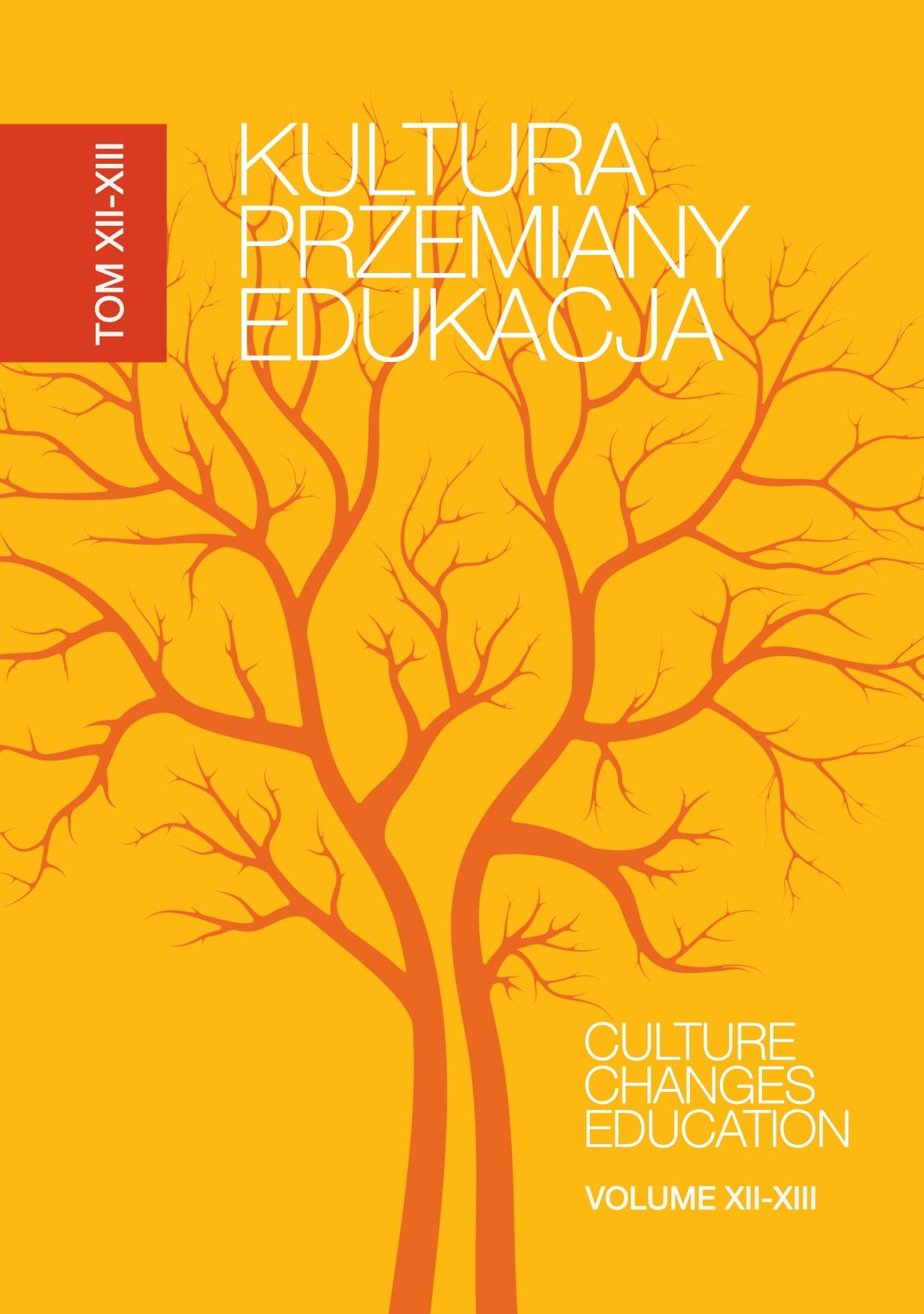From Coding on the Carpet to Scratch – Developing Visual Language Skills in Preschool and Preschool Children
DOI:
https://doi.org/10.15584/kpe.2023.12.12Keywords:
coding, scratch, mats, visual language, preschool, early childhood educationAbstract
In early childhood education, the teacher’s task is to take care of the holistic development of each student. In the current core curriculum at this educational stage, great emphasis is placed on developing the skills of critical and logical thinking, reasoning, argumentation and inference. The development of these skills is made possible precisely by introducing coding mat games at an early stage, which in the next stage turns into a specific visual programming language. The authors of the article Focus their attention on presenting practical solutions to help develop the skills indicated in the core curriculum through the use of a visual programming language. The proposed activities allow to make the transfer of mats, carpets, programming environments, i.e. ScratchJr to early childhood education.
Downloads
References
Bers M.U., Coding and Computational Thinking in Early Childhood: The Impact of ScratchJr in Europe, “European Journal of STEM Education” 2018, 3(3), doi: https://doi.org/10.20897/ejsteme/3868.
Brosch A., Smartfon w klasie: od zabawki do narzędzia edukacyjnego, „Studia Edukacyjne” 2018, nr 48, doi: https://doi.org/10.14746/se.2018.48.22.
Dondis D.A., A Primer of Visual Literacy, The MIT Press, 1973.
Fein I., Graßl B., Beck F., Fraser G., An evaluation of code2vec embeddings for Scratch [w:] Proceedings of the 15th International Conference on Educational Data Mining, red. A. Mitrovic, N. Bosch, United Kingdom 2022.
Flannery L.P. i in., Designing ScratchJr: support for early childhood learning through computer programming, IDC ‘13: Proceedings of the 12th International Conference on Interaction Design and Children, 2013, s. 1–10.
Glushkova T., Application of Block Programming and Game-Based Learning to Enhance Interest in Computer Science, “Journal of Innovations and Sustainability” 2016, 2.
Gurycka A., Rozwój i kształtowanie zainteresowań, Warszawa 1989.
Iwanicka A., Zabawa w kodowanie inwestycją w nabywanie kluczowych kompetencji społeczeństwa wiedzy [w:] Świat małego dziecka, red. H. Krauze-Sikorska, M. Klichowski, K. Kuszak, Poznań 2017.
Jochemczyk W., Krajewska-Kranas I., Kranas W., Samulska A., Wyczółkowski M., Program nauczania informatyki w klasach 4–8 szkoły podstawowej, Warszawa 2017.
Kuźmińska-Sołśnia B., Nauka programowania/kodowania w edukacji najmłodszych, „Dydaktyka Informatyki” 2018, 13, doi; https://doi.org/10.15584/di.2018.13.15.
Mańka A., Zdolności algorytmicznego rozwiązywania problemów w klasach I–III – koncepcja i narzędzia, https://www.humanitas.edu.pl/resources/ upload/dokumenty/Wydawnictwo/Manka/Manka_Zdolnosci_algorytmicznego.pdf.
Maloney J., Resnick M., Rusk N., Silverman B., Eastmond E., The Scratch Programming Language and Environment, “ACM Transactions on Computing Education” 2010, 10/4, doi: https://doi.org/10.1145/1868358.1868363.
Morańska D., Nauczanie programowania w edukacji wczesnoszkolnej – rozwijanie myślenia komputacyjnego. Dylematy i problemy, „Edukacja. Technika. Informatyka” 2018, 9(4).
Myśliwiec K., Nie tylko najmłodsi programują!, „Dydaktyka Informatyki” 2018, nr 13.
Ng A., Kewalramani S., Kidman G., Integrating and navigating STEAM (inSTEAM) in early childhood education: An integrative review and inSTEAM conceptual framework, “EURASIA Journal of Mathematics, Science and Technology Education”, 2022, 18(7), em2133, https://doi.org/10.29333/ejmste/12174.
Przytomska-Pietrzak A., Programowanie czas zacząć!, „Biuletyn Nauczycieli Bibliotekarzy” 6, red.A. Marcol, Warszawa 2017.
Raczykowska A., Programowanie i robotyka w nowej podstawie programowej wobec (nie)kompetencji nauczycieli informatyki, „Problemy Profesjologii” 2019, 2.
Raźniak A., Zakodowane opowiadania, czyli jak wykorzystać kodowanie w metodzie narracyjnej, „Języki Obce w Szkole” 2019, nr 1.
Rose S., Habgood J., Jay T., An exploration of the role of visual programming tools in the development of young children’s computational thinking, “Electronic Journal of e-Learning” 2018, 15(4).
Silva R., Fonseca B., Costa C., Martins F., Fostering Computational Thinking Skills: A Didactic Proposal for Elementary School Grades, “Educ. Sci” 2021, 11, doi: https://doi.org/10.3390/educsci11090518.
Sysło M., Myślenie komputacyjne. Informatyka dla wszystkich uczniów, https://ktime.up.krakow.pl/symp2011/referaty2011/syslo.pdf.
Świć A., Kodowanie na dywanie – w przedszkolu, w szkole i w domu, Opole 2021.
Timur S., Timur B., Güvenç E., Us İ. & Yalçinkaya-Önder E., Pre-service pre-school teachers’ opinions about using block-based coding/scratch, “Acta Didactica Napocensia”, 14(2), doi: https://doi.org/10.24193/adn.14.2.22.
Warchoł T., Wybrane rodzaje aktywności uczniów szkoły podstawowej w edukacji pozaformalnej, Rzeszów 2021.
Wasylewicz M., Lenart A., Poziom rozwoju mowy czynnej i biernej dzieci w wieku wczesnoszkolnym, „Annales Universitatis Mariae Curie-Skłodowska. Sectio J, Paedagogia-Psychologia” 2021, 34(2), doi: https://doi.org/10.17951/j.2021.34.2.9-27.
Downloads
Published
How to Cite
Issue
Section
License
Copyright (c) 2023 KULTURA – PRZEMIANY – EDUKACJA

This work is licensed under a Creative Commons Attribution-NoDerivatives 4.0 International License.


